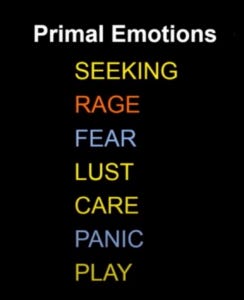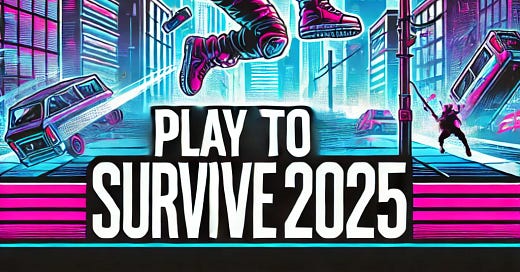Play to Survive
As a species, our secret weapon to adapt to new environments is play. We tend to forget that at our own peril.
My daughter doesn’t enjoy nursery drop-off. To ease her anxiety, I often ask her about the games she plans to play that day.
But today, she flipped the script: what would I be “playing” at work? She was perplexed to learn that, in fact, I don’t play at work. By the time we reached the nursery door, I was still tangled in the endless “but why” loop she had launched.
This innocent exchange left me pondering a deeper question. Why is it that adults don’t—or won’t—play at work? The answer isn’t as obvious as it seems.
This isn’t an argument about the intrinsic value of play versus the instrumental value of work. Instead, it’s about something counterintuitive: the instrumental value of play in navigating a world of constant change.
From the moment we’re born, our biology equips us with seven foundational neural circuits for primary emotions like fear, care, panic, and, crucially, play. These primal emotions are with us at birth. The instinct to play is built into our biology, because it is critical for our survival.

As Prof. Peter Gray argues, from a biological and evolutionary perspective: the “primary purpose of play is to promote skill learning”. Evolutionary psychology shows us that species with the most complex adult environments require the most play during development.
In times of rapid technological upheaval, those who retain their capacity for play will not only survive but thrive. The recent explosion of AI illustrates this point vividly.
Play is uniquely suited for learning entirely new skills—just watch a toddler master a language faster than their older siblings or parents. It fosters freedom, dissolving the fear of failure that often locks our minds and bodies into rigid patterns. Play removes the stakes, allowing us to explore and innovate.
That’s why the best way to approach any new technology is to play with it first. It’s no coincidence that nearly 80% of Gen Z has embraced AI compared to just 27% of Millennials.
Most adults approach new tools with a work-first mindset, asking, “How can this help me do my job?” While practical, this approach neglects how humans are wired to adapt. In radically new paradigms, we need to play before we can work—and the best performers never stop playing.

Serious play is easier said than done, and there’s no universal blueprint to follow. Nevertheless, here are some ideas to spark your journey:
Rediscover the basics: reflect on how you already engage in fun or creative activities, then explore where AI might expand those experiences.
Try group-based play: sometimes experimenting in the company of friends can spark creativity and lower the stakes.
Get inspired: Look for inspiration from creators and innovators on social media who are using AI in playful ways.
Cohorts if you must: If you prefer structure, consider a cohort-based course, like the “100 Days” school, though these can feel rigid for some.
Go Meta: And when all else fails, don’t hesitate to ask an AI chatbot for inspiration
As you make out your goals and plans for the year ahead, I hope you include an impetus to play more. It’s the only way to survive in this world.
I hope you enjoyed the last edition of Nafez’s Notes.
I’m constantly refining my personal thesis on innovation in learning and education. Please do reach out if you have any thoughts on learning - especially as it relates to my favorite problems.
If you are building a startup in the learning space and taking a pedagogy-first approach - I’d love to hear from you.
Finally, if you are new here you might also enjoy some of my most popular pieces:
The Gameboy instead of the Metaverse of Education - An attempt to emphasize the importance of modifying the learning process itself as opposed to the technology we are using.
Using First Principles to Push Past the Hype in Edtech - A call to ground all attempts at innovating in edtech in first principles and move beyond the hype
We knew it was broken. Now we might just have to fix it - An optimistic view on how generative AI will transform education by creating “lower floors and higher ceilings”.





